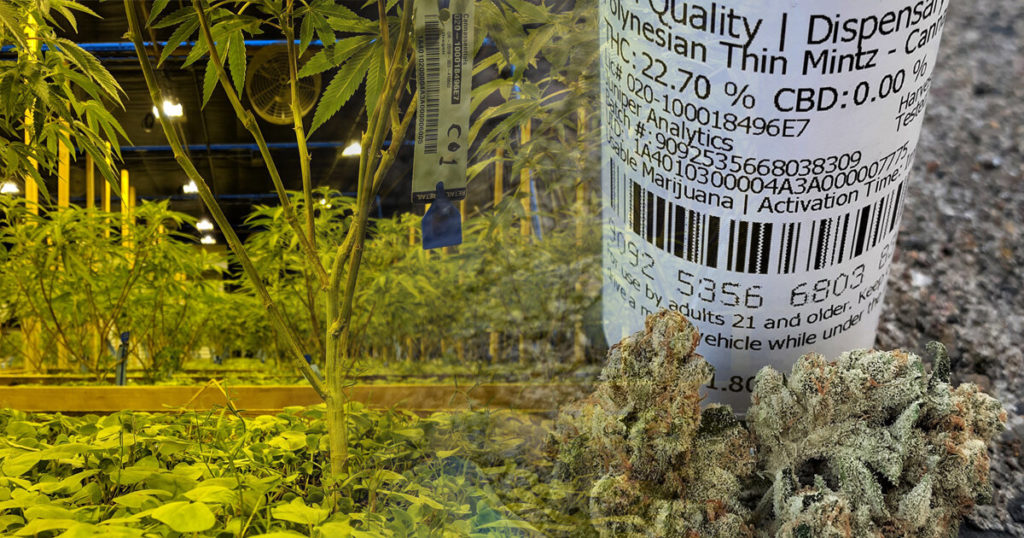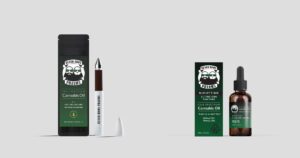
EP. 3: POLYNESIAN THIN MINTS / CANNASSENTIALS / HIGH QUALITY
Harvested: 2/01/20
Purchased: 2/15/20
Consumed: 2/21/20
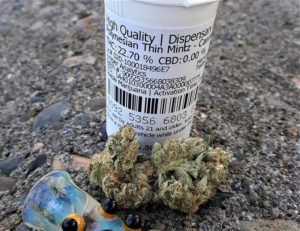
Today we discuss Polynesian Thin Mints from Cannassentials. As with most of their wonderful Cannabis: this was a jar that went REALLY quickly. I picked this up and quickly smoked it all back in those heady days of mid-February; this review was essentially written back then but I ran afoul of a rather large bag of molly shortly thereafter and I’ve been slacking on the finishing touches. I’m glad to be getting this to print, both because it reminds me of a simpler time when you could just ride your bike around without a mask and also because I can’t tell you with words how much I still had some of this flower in the queue. This is therapy for me, and if you’re lucky to find some Cannassentials in your travels: I guarantee it’ll be therapy for you, too.
Possibly the greatest victory in the post-rec Cannabis marketplace is the best-case scenario we seem to be careening further into headfirst, day by day: many of the dinosaurian bottle-nute mega-grows artificially propelled by outside investors are watching their legions of booftastic mids fall off to sale prices that don’t even justify the lights that they grew with.
Every day more and more of these outdated behemoths shut their doors to make way for nimbler, more boutique operations that have the time and passion to make every plant in their operation shine. Turns out Cannabis Culture can sniff out bullshit from quite a bit farther off than corporate America realized. Turns out that in the end, truly craft small-scale operations may well prove to be the engine that takes us forward.
For me, Cannassentials has always embodied the proper philosophy we need to be bringing forward: not only are they lovely, magical people who roll excessively large joints and seem to be infected with the most virulent outbreak of perma-grin I’ve encountered anywhere, but they are also deadly serious about growing Cannabis (and a fine swath of other plants) the right way. Everything in their garden counts. Their approach is holistic, regenerative, and exactly what we need right now.
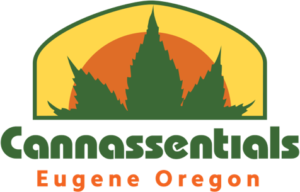
I could say a lot to this end but Shane from Cannassentials, who was nice enough to chat with me, can say it far more succinctly. Bear in mind that I can’t with writing describe what it’s like to talk with this human: Shane is frighteningly hyperintelligent and speaks VERY quickly; often during conversation you’ll realize that the paradigm shift in agriculture he just advocated really does make a lot of sense but that was several subjects ago now and you just try to hold on and absorb what you can. I’ll transcribe what’ll fit as best I can.
Me: So, talk to me about growing methods. What works for you guys?
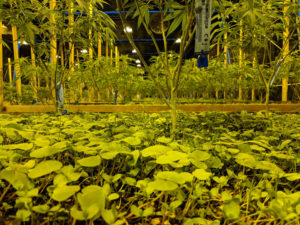
Raised beds with cannabis, chia & basil.
Photo/cultivation by Cannassentials in Eugene, Oregon
Shane: We have a hybrid system of how we grow, we call it beyond indoor. We employ really deep living organic soil raised beds. Our raised beds are really like worm beds.. and we try to look at feeding and caring for the worms as our goal, and the worms health and activity as a sign of the bed’s health. Thriving happy soil makes thriving happy plants!
We operate in a fully climate-controlled greenhouse with lighting and hydronically heated floors; “deep organic” is how we think of our feeding regimen and soil composition. We’re definitely going for what a lot of people have been doing at home with Korean natural farming and organic methods, scaled up to rec levels. We’re going for quality at the end of the day. The best ingredients going in produces the best possible flower coming out. The only animal-based nutrients we use are fish-based, just like how bears eat salmon and close the forest fertility loop bringing the abundant nutrients from the ocean back to the forests. Other than that everything is plant-based. When you build soil you’ll find that animal products have a lot of macro-nutrients to satisfy the plant’s basic needs but not very much for micro-nutrients. You don’t get that harshness or burn in the finished product when the plant has the right food web from the start. A lot of people are using a lot of animal-based fertilizers, chicken manure and such. Before rec, we were also growing organic veggies for about 13 years. The more we let things grow naturally, we’ve always gotten a better taste and longer shelf life and a lot of that experience shines through in what we do today.
Me: Excellent. So what’s your standard feeding regimen and application look like?
Shane: We feed everything you would feed to a horse, mostly in top dress, including seeds like amaranth. We top dress pretty lightly, basically like how leaves would fall on the soil in a forest, all the organisms in the soil staying really active. When plants grow they’re building up their carbohydrates first, and then they’re using the nitrogen to build aminos and build mass (their skeleton) – primary metabolites are key to identify and feed throughout the life cycle. Really having all those micronutrients is crucial. We use seawater to make our own microbe teas, we make all our own plant ferments and fruit ferments. Plants are a complete balanced fertilizer, they already include all the terpenes you want to see in the finished product. We stress deep taproots. Up to 50% of sugars a plant produces are fed down to the soil, we really kind of let the plant conduct what’s happening in the soil.
(Note: in an incredibly detailed followup email Shane laid out the following nugget which I’ll share with you now: “I like to look at growing Cannabis like a farm to table chef.. this is a list of ingredients I made a while back…It is ever changing by season and availability but this is some of what our worms eat! Alfalfa, Aloe, Amaranth, Apple, Banana, Barley, Basalt, Blackberry, Buckwheat, Burdock root, Cacao, Cannabis leaves, Carob, Chia seed, Chickweed, Clover, Coffee, Comfrey, Corn seed, Crab shells, Dandelion, Earthworm castings, Fishbones, Flax seed, German chamomile, Giant knotweed, Horsetail, Karanja seed, Kelp, Lactobacillus spp., Lambsquarter, Lavender, Lemon balm, Lemon eucalyptus, Lots of Love, Mango, Mineral Rockdusts, Mint, Mountain Creek water, Neem seed, Nettles, Papaya, Peat, Potatoes, Pumice, Pumpkin seeds, Rain water, Rice, Sea salt, Squash, Straw, Sugarcane, Sunchoke, Sweet orange, Thistle, Thyme, Tulsi basil, Turkey rhubarb, Vetch, Wild yam, Willow.” …so, y’know…)
Me: So how has ramping up to rec levels of scale been for you?
Shane: There’s been a lot of challenges! (laughs) We lost our greenhouse last winter, a big snowstorm dropped two feet on Eugene, so we’re still scaling back up from that. It cut our production in half but we’re in the process of building a bigger, better greenhouse that should be ready by spring. Our biggest challenge in scaling up has been the quality of infrastructure and being able to afford it! Our resilient living soil beds make for healthy plants but keeping the conditions stable and correct in the greenhouse are what assures the quality and consistency of the flowers.
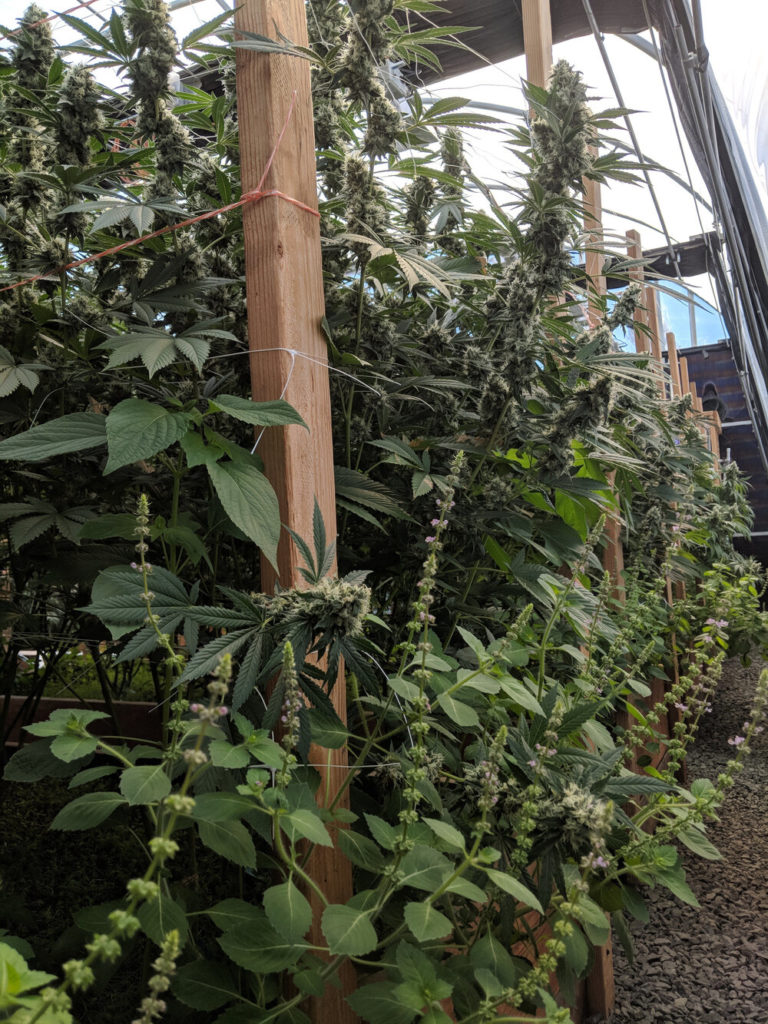
COMPANION PLANTING! LIVING SOIL!
Photo courtesy of Cannassentials, a DEM Pure cannabis farm in Eugene, Oregon
Me: Excellent. So tell me: What drives you to run a certain cultivar, and what do you look for when seeking one out?
Shane: We LOVE phenotyping. We are constantly sprouting seeds and genotyping them out to assure new strong mothers of unique varieties. We really go for what the smoke is like. Certain plants really do have the best smoking experience and that’s our primary guideline. It’s been amazing, scaling up to where we are and being able to do it in the open, the herb has been able to do SO much better than ever.
The Polynesian has a really nice high, and actually for the strong high it doesn’t have too strong of a smoke. It has a Cookies growth structure with a little more stretch in flower than cookies.
…and with that, I’ll give you my impressions.
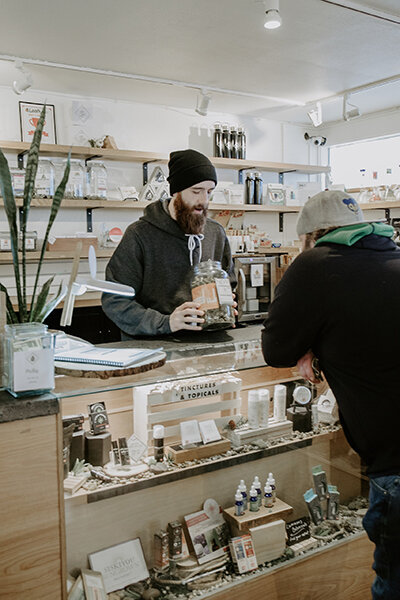
High Quality Dispensary in Corvallis, Oregon
I picked this up from High Quality in Corvallis. There’s a lot of good stuff I enjoy about Corvallis and I rank High Quality chief amongst these: Not only is their flower selection impeccably curated but every budtender in there is SUPER on point. If you’ve got questions about grow methods, terpene content, anything at all: this is absolutely the spot you go in town. Plus their playlist always kicks ass. BIG points for that, I say.
Nose: The brighter, more citric side of gas. Some rosemary atop the classic OG funk. Broken open there’s a fresh, medicinal AK-47 sort of quality behind it all.
Palate: Licorice, Necco Wafers, Ivory soap all ride on the earthy gas beneath. Got a super-clean BHO-like exhale. Holds through the entirety of the bowl, finishes clean and pungent.
Effects: I found this to be rowdy and uplifting without being crazy cerebral. Kind of like a good buddy who’s into 311 and riding dirtbikes, definitely somebody you’d want around for all manner of good-natured antics. So I hopped on my bike and cranked some 311 up on the radio, tooled around the city like a goddamn boss. It was sweet. I was all hopping off shit and hysterically giggling “WASSUUUUUUP BROH!!!” to distressed families. I’m not sure why. I can remember these emotions and trains of thought from earlier in the evening but they make much less sense four hours later. All in all a fine adventure and I wish I had more weed and that’s usually the mark of a good thing.
…So there it is. Much like the grow from whence it came I’ve tried to tell the story of the flower from its roots up; as it happens most good roots run deep. I hope you’ve enjoyed, I hope you’re well, I hope to catch you down the way. Stay tuned, stay positive, Selah…
Beard Bros. Pharms guest contributor and Oregon’s own bearded wonder, the one and only Dick Fitts reports that the weed scene across the state is operating in full force and today he is back with another heady flower review. Let’s take a peek at what he’s been puffin’ on during these crazy days.



